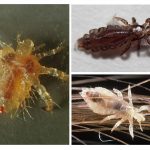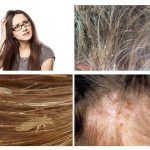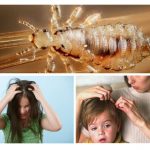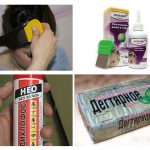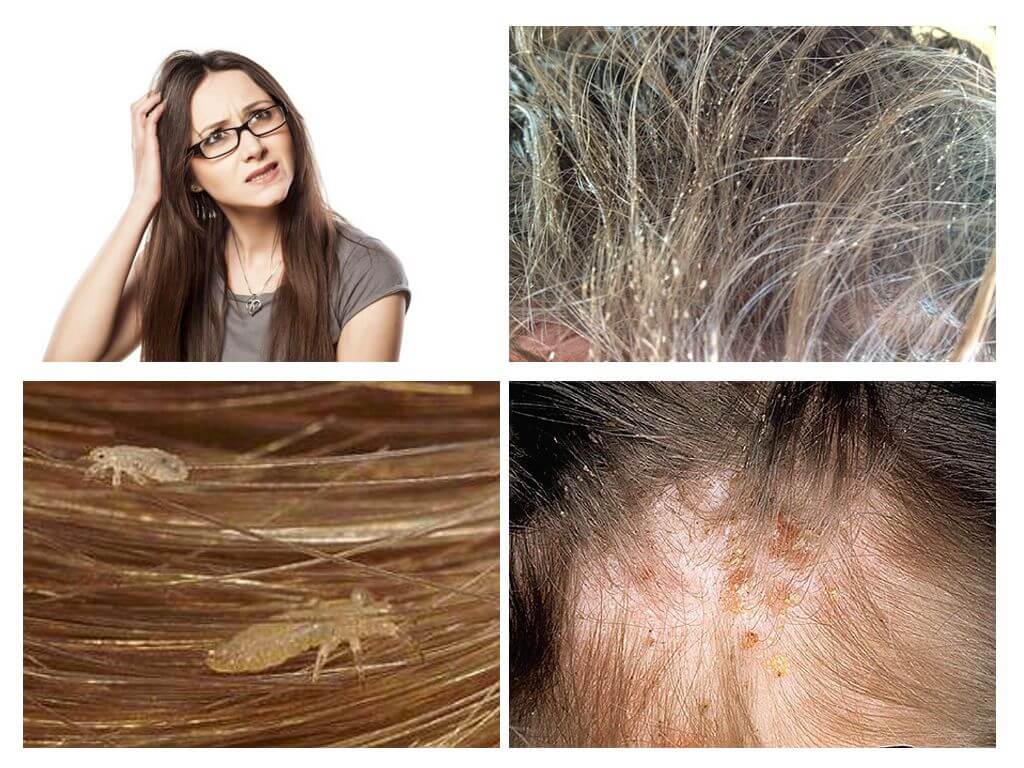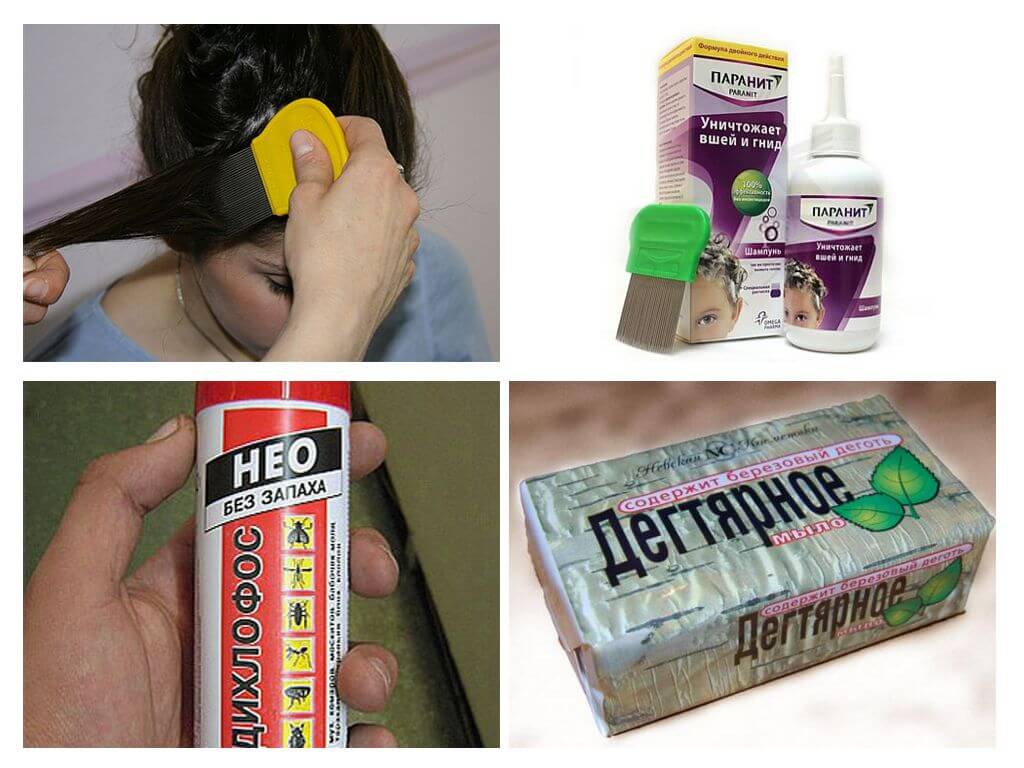Why do lice appear, control methods, head lice prevention
Content
- Lice species
- Symptoms of lice
- Pediculosis in children
- Pediculosis Therapy
Infection lice - one of the most acute and unresolved problems in the world. The causes of pediculosis are mainly associated with all sorts of disasters, such as natural and man-made disasters, armed conflicts, socio-political crises and many other factors that affect the deterioration of the living conditions of mankind.The population, drawn into these processes, creates around itself foci of infection, which develop into epidemics of the disease.
Unfortunately, this problem does not bypass the well-off strata of society, because parasites do not ask about the social status of their victims. Lice are infested in adults on clean hair quite often. This is explained by the fact that insects do not tolerate fat, which covers dirty hair, and therefore they “gladly” settle in more favorable conditions.
Characteristics of ectoparasites
Lice are classified as bloodsucking insects. In nature, there are up to 100 species of these parasites, differing in degree of danger and appearance. In humans, there are only three types of ectoparasites:
The main place of their habitat is thick hair on the human body.
Important!
Lice are dangerous not only those that can cause discomfort, cause discomfort and severe itching, but also cause spread of dangerous infectious diseases, which include typhus and relapsing fever, as well as Volyn fever.
Insects feed on the host’s blood and during the day can suck up to 5 mg of blood from their prey. Crawling lice on the surface of the hair quickly enough, due to the structure of their limbs. The cleaner the skin, the parasites are easier to eat, which is a confirmation and justification for why lice are inflamed in clean people. Lice breed rapidly, by laying the female eggs, which are called nits. They firmly attach their future offspring to the hair with a sticky mass at a distance of about 4 cm from the roots. The photo shows how lice and nits look in human hair.
On a note!
Lice are particularly dangerous for pregnant women, nursing mothers and babies. The baby’s immunity is weak and not fully formed, and chemicals that can adversely affect health are often used to kill insects and nits.
Head lice choose the temporal, parietal and occipital part of the human head as the main habitat and existence. The development of the insect lasts about 9 days, the same is and incubation period. The female for the month of her life is able to lay about 140 eggs.Pests are very sensitive to changes in ambient temperature, which affects lifespan. The mark on the thermometer within 31 ° C is comfortable for life, but for some reason they do not leave patients with a high temperature. But nevertheless there is detrimental temperature range for lice.
The cause of lice another variety can be body lice. Quite large individuals are distinguished by high fecundity and gluttony. They live in the seams of bedding and folds of clothing. Females attach the eggs to the tissue fibers, but sometimes there are nits of the parasite on the vellus hair of the human body. Linen lice poorly tolerate fever and move to more favorable places. They move at a speed of 30 mm per minute.
The third type of pediculosis culprits - pubic lice in person or ploshchitsy. They are practically immobile and are always in a state of saturation. Females attach their eggs to hair that grows on pubis, as well as eyebrows and eyelashes. Infection occurs during sexual intercourse or when using common washcloths, towels or bed linen.
Interesting!
Of all the lice, only the pubic parasite actively spreads after swimming in stagnant bodies of water. Such cases are most frequent in populated areas of Cambodia, India and Laos. The main danger is that this type of infection is the most common cause of illness in children. They appear lice on eyelasheseyebrows and head.
Causes of pediculosis
The appearance of lice in humans is quite simple to explain. Contrary to the opinion that pediculosis can occur only in unscrupulous and asocial categories of the population, today experts fix the disease in well-off people. The probability of being infected is very high, and it can happen to anyone, because lice are not interested in social status and the age of their victim. The causes of insects in adults and children are as follows:
- low cultural level in society, failure to comply with strict rules of individual hygiene;
- close contact with people infected with head lice;
- unsanitary conditions in the house, contributing to the rapid spread of lice;
- promiscuous sex life in which the pubic parasite migrates to a new host;
- causes of lice in children - contact with infected children in kindergartens, schoolshealth camps and playgrounds;
- the exchange of hygiene items, personal belongings, headgear, which may be nits infected with lice person;
- visiting public baths, saunas, as well as the use of sun beds, towels and rugs that are not subjected to thorough sanitary treatment;
- beauty salons and hairdressers, not adhering to the simplest hygienic rules;
- accommodation in hotels, hostels and frequent trips on business trips;
- travel in crowded public transport;
- crowded queues and public wardrobes in various establishments;
- swimming in standing natural pools or pools.
Any of these factors can cause an ectoparasite infection to occur. A big misconception is the belief that a child or adult head lice can get stressful. This information is erroneous, as parasites can appear only through direct contact with ill pediculosis.
The category of myths include claims that lice are transmitted from animals, and also that they can fly and jump. Ectoparasites do not have wings and unlike a flea do not know how to jump. They can only crawl from the hair or clothing of an infected person to a healthy one through direct physical contact.
Important!
Lice are not transmitted to humans from animals and vice versa.
Symptoms and diagnosis of head lice
Most often there are lice on the head in children and adults with long curls. At the very beginning of the disease of insects is very difficult to notice in the hair. On the head, you can only detect the effects of their stay - itching after numerous lice bites and combed wounds. Damage to the skin is most often observed in the temporal and occipital regions, as well as in the ear region. In addition to the above symptoms, the patient has other symptoms. signs of pediculosisThese factors include:
- irritability and insomnia;
- large amounts of lice in hair dander-like nits;
- papular urticaria at the site of bites.
With the start-up form of pediculosis, a person may develop dermatitis, appear purulent rash, and there is inflammation of the lymph nodes. Abundant secretory secretions of parasites lead to tangling of hair and the appearance of an unpleasant putrefactive smell.These symptoms of pediculosis should serve as a signal to take urgent measures that will help get rid of a dangerous disease.
If there are clear signs of the presence of lice in a person's hair, it is quite simple to diagnose head lice. The main method, which allows to detect parasites, is a careful examination of the patient. With this method of diagnosis, it is very difficult to detect adult lice, but numerous nits attached to the hair will be the main symptom of a developing disease. To fight insects is necessary at the slightest suspicion of infection.
Children and Pediculosis
Children's pediculosis is a very common phenomenon, which is most often manifested in the younger generation. For them, the most characteristic type of insect that lives in the hair on his head. Lice feed on their host's blood. Their bites are accompanied by itching, causing discomfort and leading to scratching of the scalp. When breeding, insects lay eggs (nits), which are fixed on the child's hair with a specific sticky enzyme.In appearance, they resemble dandruff, which can sometimes mislead parents. But if dandruff can be blown away, then getting rid of the nits is much more difficult.
Start up lice in children only as a result of direct contact with the parasite carrier or through his personal wardrobe or hygiene items. It is quite simple to get infected in children's institutions. After all, children love to exchange clothes, try on other people's hats, use hairbrushes, barrettes and other items of their friends. Lice can be transmitted and through public wardrobes in the absence of separate lockers for storage.
On a note!
Interesting tips on how to avoid lice infection gives Komarovsky in a lecture on lice.
The younger generation is most at risk of being infected with lice. The causes of pediculosis in children are in many ways similar to the situation in adults, but they have their own specific features. These factors include:
- the lack of well-established hygiene practices that do not allow the exchange of clothes, use the same bed, comb, barrettes and other personal items;
- tendency to close contacts - games, fights, hugs, frequent head contact;
- abundance of contacts with peers, among which may be a carrier of parasites.
Another important reason explaining why a child often has head lice is the low selectivity of children when choosing friends and acquaintances. They are equally easy to communicate with well-groomed peers, as well as with children from an unfavorable environment, for whose cleanliness there is no one to follow.
Important!
Young children can get lice directly from an infected mother. This contact is inevitable, but in this situation it all depends on how much she cares about preventing the possible infection of her child.
Methodology for getting rid of lice on hair
After the fact of the presence of lice in the hair is established, and the sources of infection are determined, urgent measures should be taken combat head lice. Parasites have a high survivability, so the process of getting rid of them requires great patience. If you find nits, you should urgently consult a doctor and decide effective and safe preparation for lice.
There are several methods used in the process. pediculosis treatment at home - mechanical, chemical, popular and combined reception. The mechanical method is to combing nits from hair with the help of a special comb lice or with your fingers. This process is quite time-consuming and requires regular four-time combing of hair at regular intervals of two weeks.
The treatment of lice on the hair and the prevention of re-infection is provided by highly effective chemical drugs. In pharmacies, you can always buy aerosols, the sprays, shampooslotions ointment and even repellents, which will allow to avoid infection during visits to unfavorable sanitary conditions, as well as become a reliable preventive measure.
Pediculicides contain highly effective insecticides - malathion, phenotrin, permethrin, benzyl benzoate, as well as their various combinations. When using chemicals it is necessary to strictly follow the rules of application prescribed in the instructions, which will allow to avoid negative consequences.
Folk remedieswidely used in everyday life also allow get rid of lice. Pediculosis can be treated with the help of such techniques:
- shaving or trimming long hair;
- the use of decoctions of medicinal plants;
- kerosene use with vegetable oil;
- drawing acetic solution or hellebore water on hair;
- use of Dichlorvos;
- tar soap.
Preventive actions
Prevention of pediculosis does not require complex procedures. It is in compliance with the elementary rules:
- basic personal hygiene;
- regular checking of the baby’s hair condition;
- the exclusion of contacts with unscrupulous contingent, as well as the use of other people's personal belongings;
- periodic washing of the head by special means.
All these activities will protect against unwanted lice infection.
Interesting!
You can become unattractive for parasites by essential oils for lice: eucalyptus, lavender or tea tree. A few drops of fragrance provide a reliable barrier to hair.
You should pay attention to the fact that if lice constantly appear, this indicates the inefficiency of the given procedures,or else the carrier of parasites is constantly surrounded.

